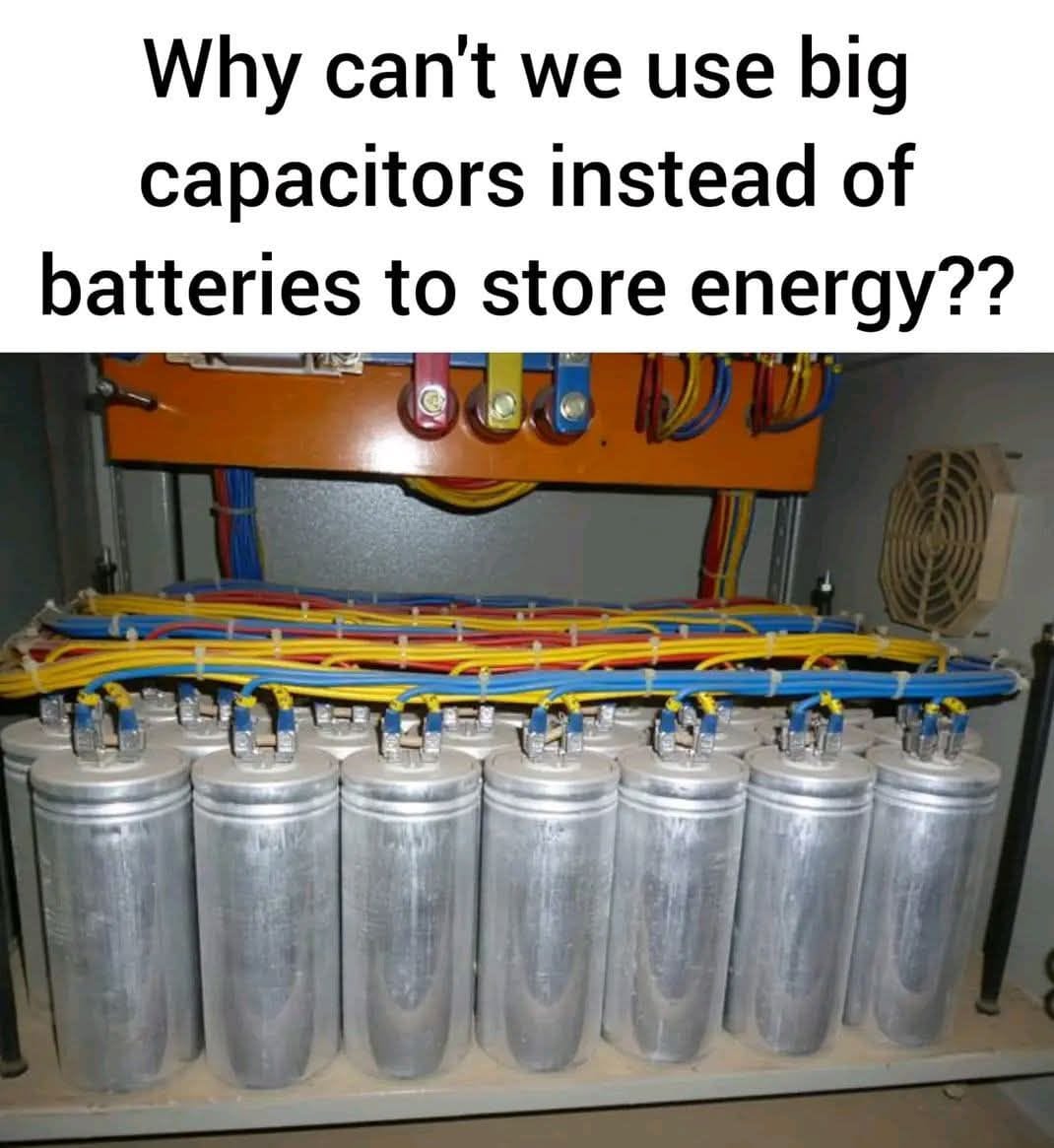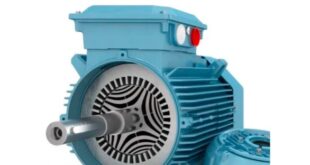Answer:
Capacitors can’t store as much energy as batteries for the same size and weight, and they lose their charge much faster. This makes them impractical for long-term energy storage like batteries are used for.
Reasoning:
We can’t use big capacitors instead of batteries to store energy primarily because capacitors and batteries are fundamentally different in how they store and release energy, and these differences make capacitors unsuitable for long-term energy storage in most practical applications.

To begin with, capacitors have a significantly lower energy density compared to batteries. While batteries store energy chemically, allowing them to pack a large amount of energy into a relatively small space, capacitors store energy electrostatically. As a result, even very large capacitors (or banks of capacitors) can only store a fraction of the energy that a similarly sized battery can. For example, lithium-ion batteries typically offer an energy density of around 150–250 watt-hours per kilogram, while standard capacitors might only reach 1–5 watt-hours per kilogram, and even advanced supercapacitors rarely exceed 20 watt-hours per kilogram. This means that to store the same amount of energy as a small phone battery, you’d need capacitors many times larger and heavier, which is simply not practical for most devices or systems.
Another major issue is that capacitors do not hold their charge well over time. They tend to self-discharge quickly, losing a significant portion of their stored energy within hours or days, depending on the design and materials. In contrast, batteries are designed to retain their charge for extended periods, often lasting weeks or even months with minimal energy loss. This makes batteries far more suitable for applications where stored energy needs to be available over a long duration, such as in mobile phones, electric vehicles, or backup power systems.
Furthermore, the voltage behavior of capacitors during discharge presents another challenge. As a capacitor discharges, its voltage drops linearly with the charge, meaning that the output voltage decreases steadily as the energy is used. This is problematic for most electronic devices, which require a stable voltage to operate correctly. Batteries, by contrast, maintain a relatively consistent voltage throughout most of their discharge cycle, providing a more reliable and usable power supply.
Cost and practicality also come into play. Large capacitors or supercapacitor banks capable of storing meaningful amounts of energy are expensive and bulky. Batteries have benefited from decades of refinement and mass production, making them far more cost-effective per unit of stored energy. While capacitors do have some advantages—such as being able to charge and discharge very quickly, and having a long cycle life of millions of cycles—these benefits are only useful in specific scenarios like providing quick bursts of power or smoothing voltage in power grids. They are not suited for energy storage where long-term and high-capacity energy delivery is required.
In conclusion, while capacitors are excellent components for certain fast-response electrical tasks, they cannot replace batteries for storing large amounts of energy over extended periods. Their low energy density, rapid self-discharge, voltage instability, and high cost make them impractical for most applications where batteries are used. Instead, capacitors and batteries each serve their unique roles in modern electronics and energy systems, often working together to balance short-term performance with long-term storage.
 Electrical Engineering World Wiring a Brighter Tomorrow!
Electrical Engineering World Wiring a Brighter Tomorrow!



